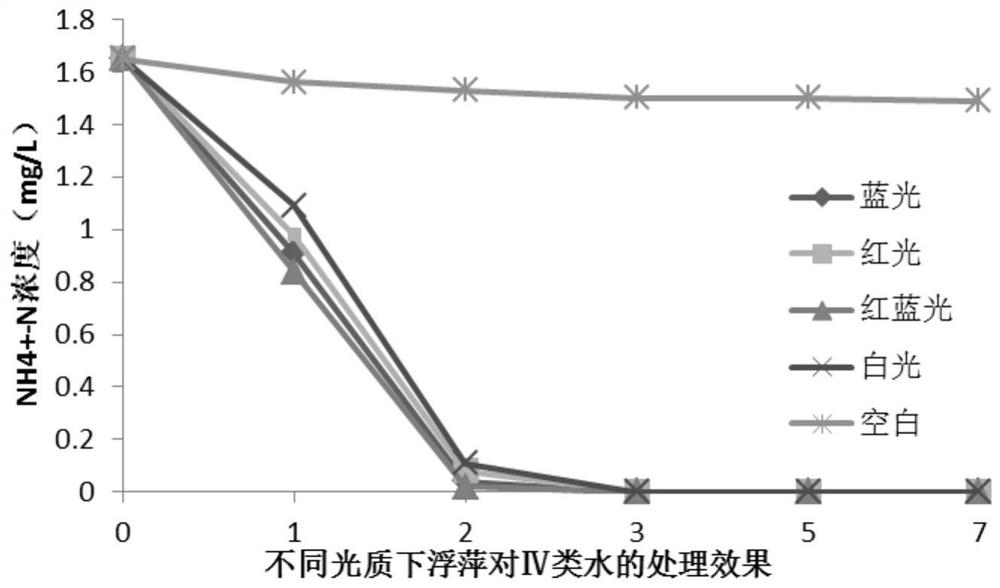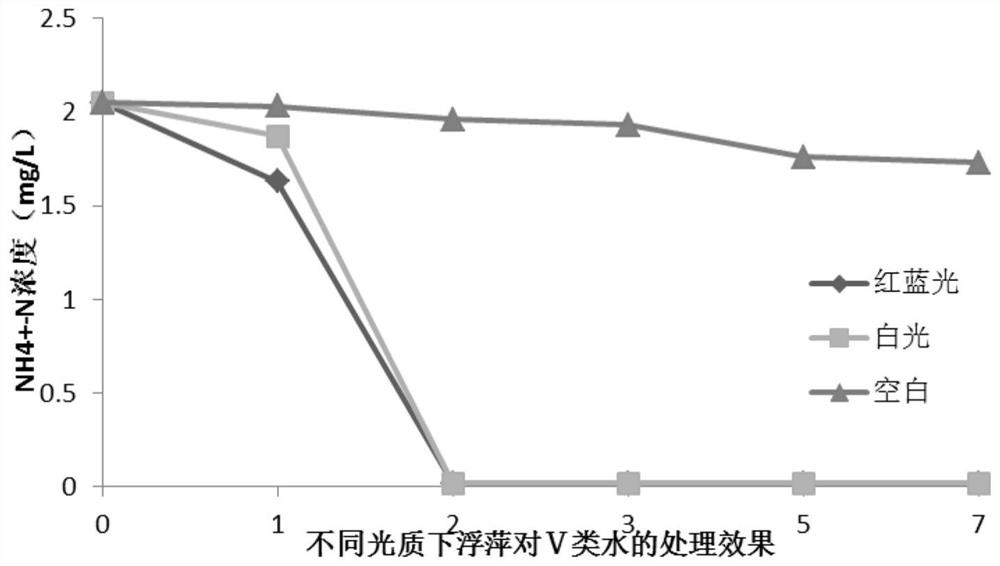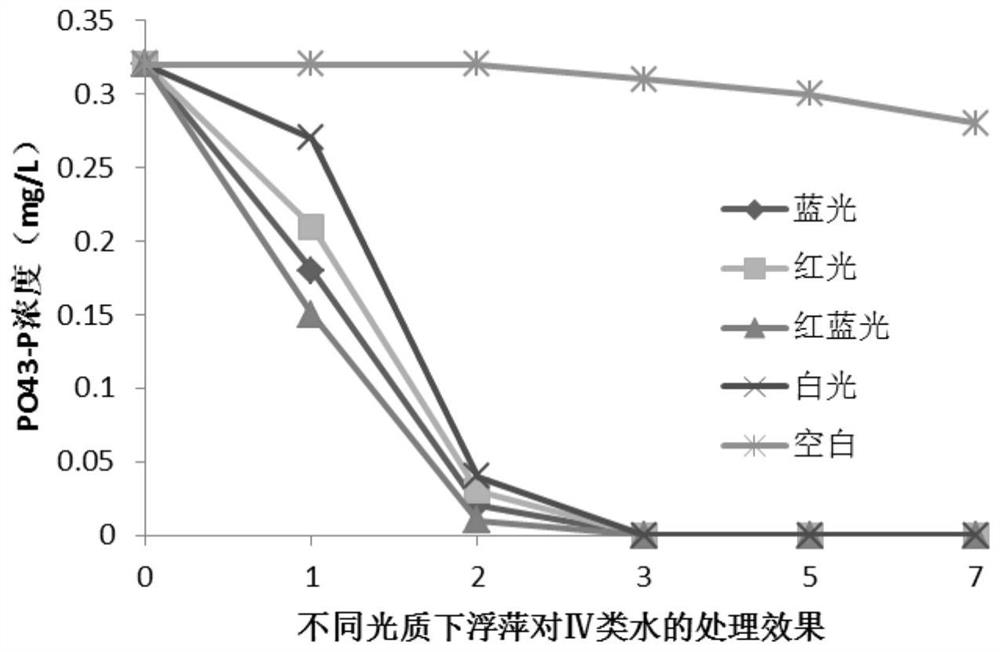A method of using high-quality light source to promote duckweed to quickly purify micro-polluted surface water
A technology of micro-polluted water and duckweed, which is applied in the field of aquatic energy plant environmental restoration, can solve the problems of inability to meet the purification needs of micro-polluted water bodies, slow down the reproduction speed, etc., achieve reduced light energy consumption, high comprehensive utilization rate, and reduced electric energy The effect of consumption
- Summary
- Abstract
- Description
- Claims
- Application Information
AI Technical Summary
Problems solved by technology
Method used
Image
Examples
Embodiment 1
[0078] Example 1: Cultivating duckweed under a single red light to purify Class IV water
[0079] (1) According to the operation steps of Comparative Example 1, the light source was changed from ordinary white LED light to red light LED light, and the rest of the conditions were completely the same, and cultured under full light for 7 days. Samples were taken on days 1, 2, 3, 5, and 7.
[0080] (2) measure dry weight, starch content of each sampling duckweed by the method for comparative example 1, calculate the biomass of duckweed, dry matter accumulation rate, starch content, starch output and starch accumulation rate, the result is as follows Figure 5 , 7 , 9, 11, and 13.
[0081] Depend on Figure 5 , Figure 7 According to the biomass and dry matter accumulation rate data, the biomass of duckweed is respectively: 25.63g / m 2 (1d), 34.59g / m 2 (2d), 52.66g / m 2 (3d), 67.25g / m 2 (5d) and 72.30g / m 2 (7d). The average dry matter accumulation rate of duckweed was 11.56...
Embodiment 2
[0087] Example 2: Cultivating duckweed under a single blue light to purify Class IV water
[0088] (1) According to the operation steps of Comparative Example 1, the light source was changed from ordinary white LED light to blue light LED light, and the rest conditions were exactly the same, and cultured in full light for 7 days. Samples were taken on days 1, 2, 3, 5, and 7.
[0089] (2) by the method for comparative example 1, measure the dry weight, starch content of each sampling duckweed, calculate the biomass of duckweed, dry matter accumulation rate, starch content, starch output and starch accumulation rate, the result is as follows Figure 5 , 7 , 9, 11, and 13.
[0090] Depend on Figure 5 , 7 According to the biomass and dry matter accumulation rate data, the biomass of duckweed is 26.72g / m 2 (1d), 35.69g / m 2 (2d), 52.98g / m 2 (3d), 67.53g / m 2 (5d) and 70.62g / m 2 (7d). The average dry matter accumulation rate of duckweed was 12.65g / m 2 d(1d), 10.81g / m 2 d(...
Embodiment 3
[0096] Example 3: Cultivating duckweed under different proportions of red-blue mixed light to purify class Ⅳ water
[0097] (1) According to the operation steps of Comparative Example 1, the light source was changed from a normal white LED lamp to a red-blue mixed LED lamp. The ratio of red and blue light is shown in Table 5. The rest of the conditions were exactly the same, and they were cultivated in full light for 7 days. Samples were collected on days 1, 2, 3, 5, and 7.
[0098] Table 5 Red-blue mixed light ratios
[0099]
[0100]
[0101] (2) By the method of Comparative Example 1, measure the dry weight and starch content of each sampling duckweed, and calculate the biomass, dry matter accumulation rate, starch content, starch yield and starch accumulation rate of duckweed. The results are shown in Table 6.
[0102] Table 6 The growth of duckweed under the action of different proportions of red-blue mixed light
[0103]
[0104] (3) By the method of compara...
PUM
| Property | Measurement | Unit |
|---|---|---|
| wavelength | aaaaa | aaaaa |
| wavelength | aaaaa | aaaaa |
Abstract
Description
Claims
Application Information
 Login to View More
Login to View More - R&D
- Intellectual Property
- Life Sciences
- Materials
- Tech Scout
- Unparalleled Data Quality
- Higher Quality Content
- 60% Fewer Hallucinations
Browse by: Latest US Patents, China's latest patents, Technical Efficacy Thesaurus, Application Domain, Technology Topic, Popular Technical Reports.
© 2025 PatSnap. All rights reserved.Legal|Privacy policy|Modern Slavery Act Transparency Statement|Sitemap|About US| Contact US: help@patsnap.com



